What’s in Your Livestock Shed? visits a converted calf shed
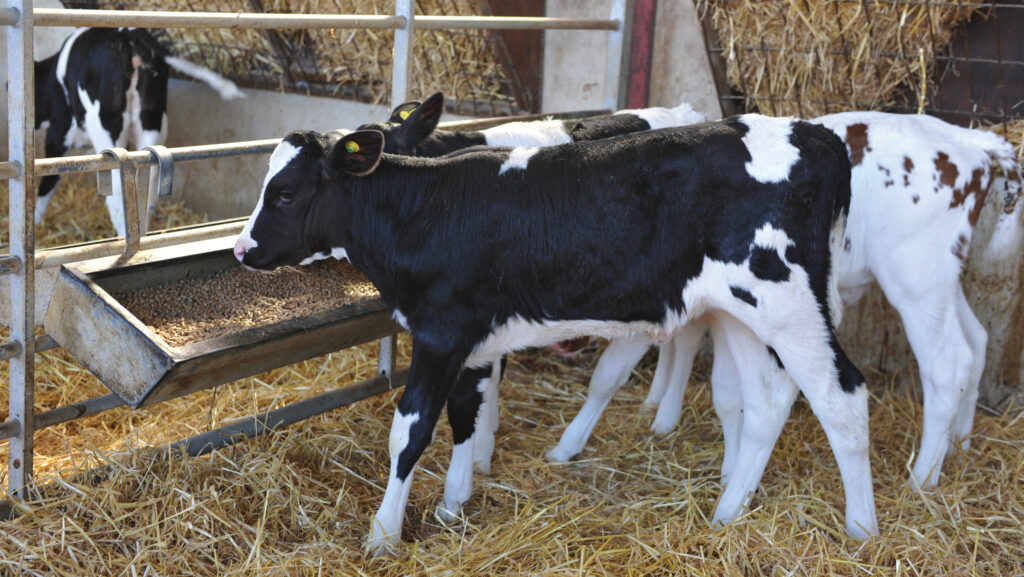 © Debbie James
© Debbie James Historically, a high incidence of pneumonia had impacted calf health at The Brook, Tybroughton, near Whitchurch, Shropshire, and there were consequences for performance when animals joined the milking herd.
In 2019, the Mottershead family started working in partnership with their vet, from Daleside Veterinary Group, to monitor calf weights.
“We found calves were losing weight, not gaining it,” says Susie Mottershead, who is in charge of rearing and farms in partnership with her husband, Mark, and his parents, Richard and Sue.
See also: Video – What’s In Your Livestock Shed? visits high-health calf system
One factor in this was the calves’ environment, with animals housed in a converted farm building where they shared air space with the milking herd.
“We thought we had done a good job of converting it but it wasn’t ideal,” Susie admits.
Farm facts
- 300-cow pedigree Deedale Holsteins
- 9,800-litre average milk yield
- 10/20 swingover parlour
- Milk sold to the Co-op
- 215ha of owned land across two sites
- Two full-time and one part-time staff and a team of relief milkers
Lung washing, which involves running a tube down the calf’s nasal passage to suck out a sample from its lungs, showed that the pneumonia present was the bacterial strain, Pasteurella multocida.
As there is no off-the-shelf vaccine, it explained why previous inoculation had been unsuccessful. Cultures were grown from the lung samples and a vaccine produced.
Calves are now vaccinated at days one and 14 of age and this, in combination with the new housing, has “completely changed things”, says Susie.
“It helped us reduce our antibiotics use and improve growth rates from an average of 0.57kg a day to more than 1kg.
“Those [problems] that we had been trying to improve by doing everything possible for years, we finally solved.
“Calves previously took, on average, 10-12 weeks to double their birthweight, we are now achieving that in seven to eight weeks.”
How did you design the unit?
The framework was recycled from another farm and we hired a steel company, Steelforce, to refurbish and adjust it to fit our requirements. They repainted and erected it and we completed the interior.
The actual design was very much Mark’s planning, as he wanted a solution that ticked all the boxes.
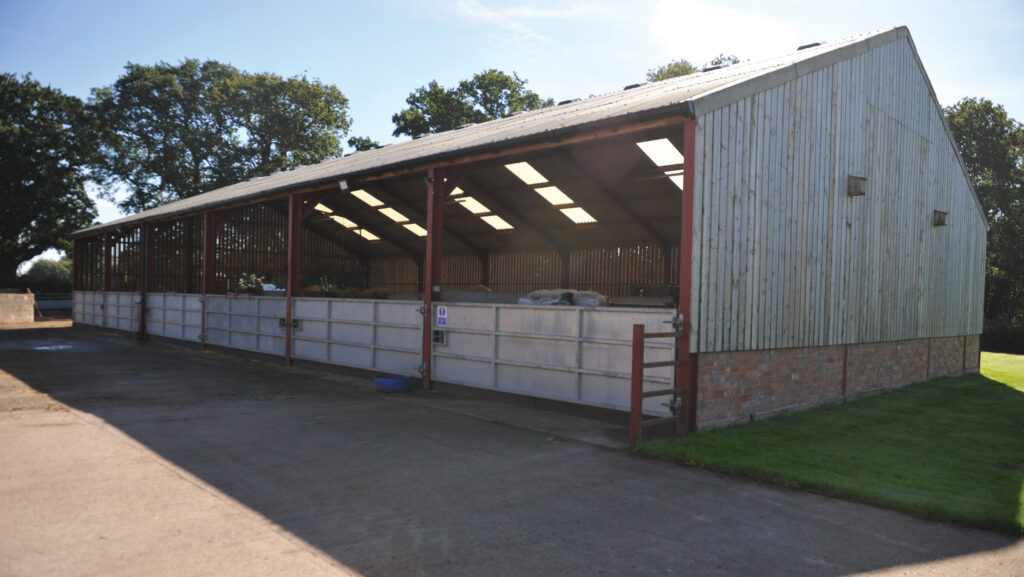
© Debbie James
For example, he designed the pen floors at the back of the shed with a 5% slope so that any moisture runs out into a drain outside the shed instead of sitting in the straw bedding.
In total, with the frame and the fittings, the whole thing cost £25,000
Tell us about the shed’s specifications
It is 28m long, 14m wide and 4m to the eaves. It is open-fronted with the front facing away from the prevailing wind, so it carries the air over the top but the calves get the benefit of the “pull-through” of fresh air. The other three walls are made of Yorkshire boarding.
There are single pens at the back, with plastic removable partitions – made from conservatory roof panels which are light, durable and easy to remove to power wash – between each pen, which means we can adjust the size of the pens as needed.
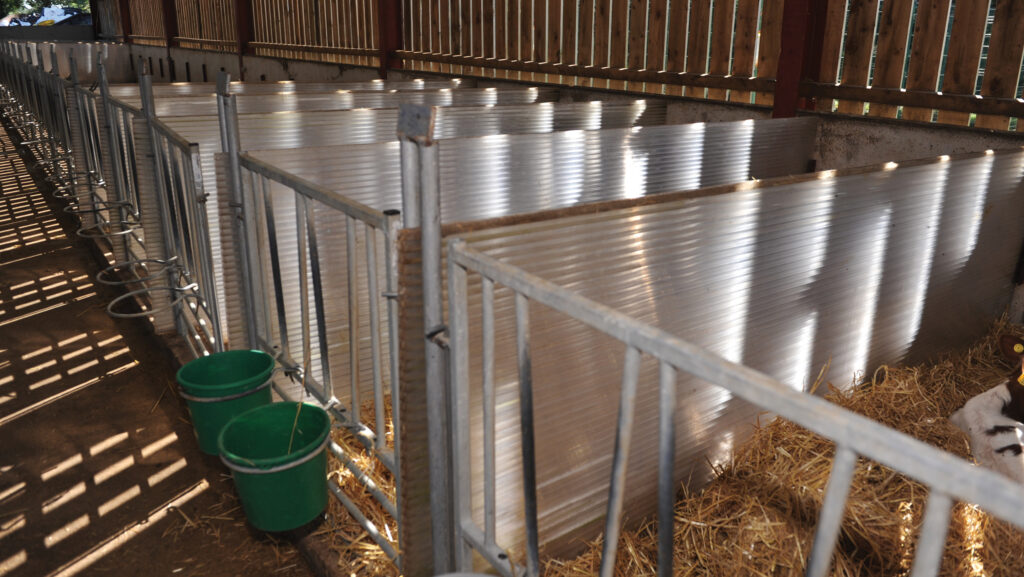
© Debbie James
As soon as a calf is drinking well, we group into pairs or threes and they remain in those pens for three or four weeks before they move into a bigger pen, where they have access to a greater volume of straw.
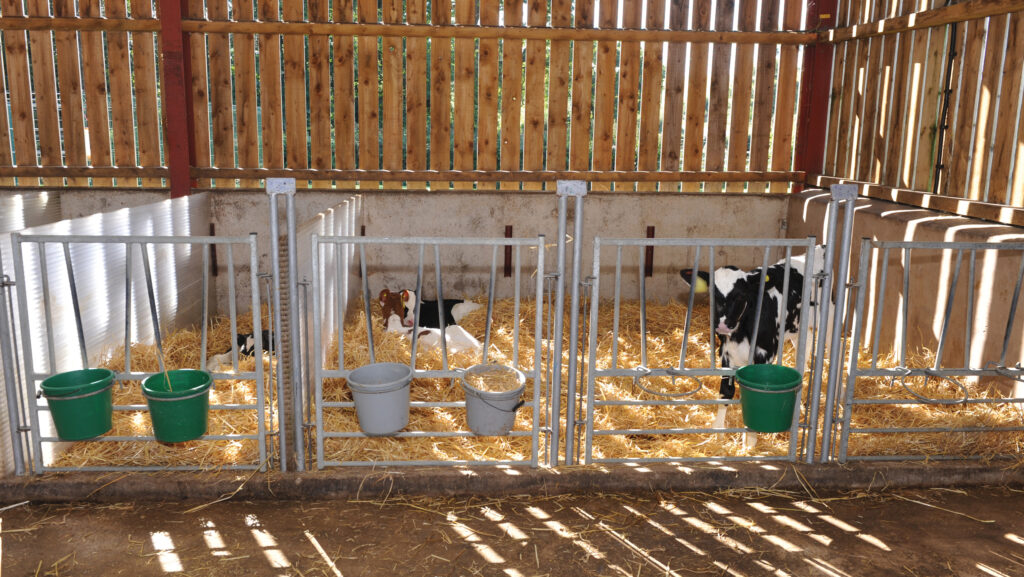
© Debbie James
Calves stay in the shed ideally until three or four weeks post-weaning, so that they are not hit with too much stress at one time.
What is your favourite feature?
The light and airy environment and how well the shed is ventilated, with fresh air coming in and stale air going out.
Some farmers might look at it and think that the roof is too high as a lot of calf sheds are quite low.
But when we smoke tested it, it performed really well: it draws stale air up and out, and it performs well in all weathers.
What has been your best buy and why?
Although we had it before the shed, the MilkTaxi feeder – I couldn’t manage without it.
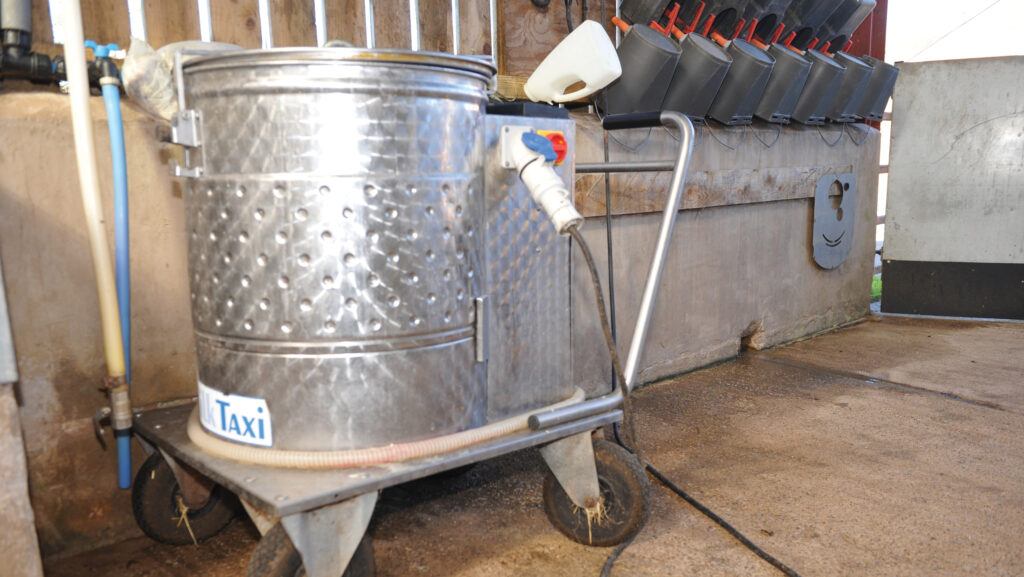
© Debbie James
It ensures that every calf gets a specified volume of milk at the right temperature and it is consistent, there is less margin for error.
What would you do differently if you were to build it again?
Make it bigger. We thought it was massive when we put it up and that it would completely satisfy our needs forever, but ongoing TB restrictions mean we have to hold beef calves between tests for longer than we otherwise would, and we could do with more space.
Has any design aspect helped ease management?
A bit of everything: the format of the pens and the ability it gives us to transition the calves through the system; having two sinks with hot water for washing the feeders, and Mark has designed it so they can be hung up to dry.
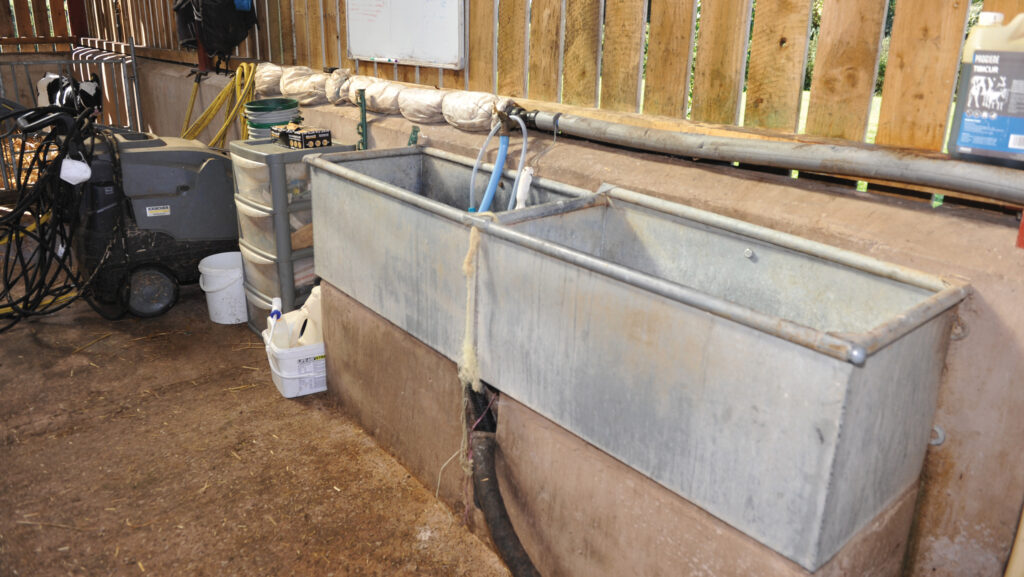
© Debbie James
Small plates of steel are built into the steelwork of each pen which I use as labels to make any notes about the calves in that pen.
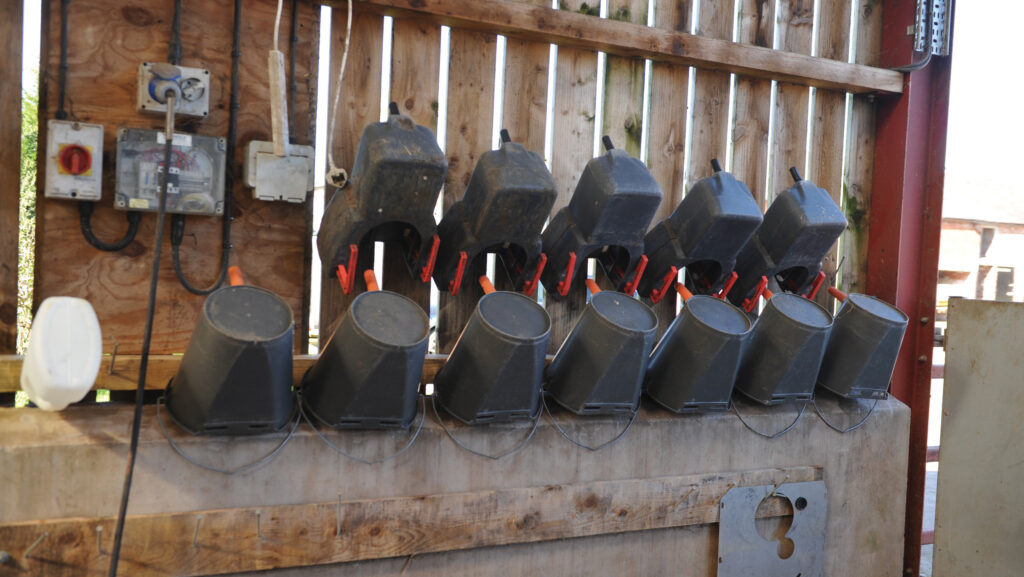
© Debbie James
For longer notes, there is whiteboard that is an important source of information for others members of staff who do the calves at weekends.
What are your calf feeding protocols?
Every newborn calf gets four litres of their dam’s colostrum, which we test. We aim for a Brix reading of 25-30%, ideally closer to 30%.
I freeze colostrum, so if we get some that’s not great I’ll either give them an additional feed of a higher quality colostrum, or swap [to better quality].
Cow transition milk is then fed for two days and the calves move on to milk powder – every calf gets what it wants according to their eagerness to feed – and starter cudlets.
We are trying to get as close to replicating automatic feeding without having those feeders.
Rather than having a blanket approach, this system provides the opportunity for some calves to have a bit more, without overfeeding those that don’t want it and wasting milk.
Our data shows that it definitely improves growth rates, they push on quicker.
How do you wean?
Weaning is based on cudlet consumption, when calves are eating 2-4kg day we can start pulling back on milk volume.
We weigh every two weeks with a weigh tape, and at the final weighing calves will be romping on, growing 1kg a day, sometimes as much as 1.26kg.
We lung scan calves at weaning because although I monitor temperatures, visual symptoms can be subtle.
It enables us to create a detailed health passport for each animal combining phenotype and genotype data.
If we find lung damage, we can base decision making around her future in the herd, such as how to breed from her.
